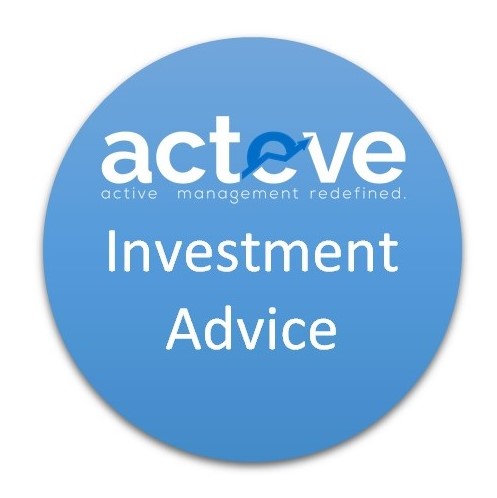Today it is virtually impossible for individuals to buy investment advice in a fiduciary framework, without paying for full-on investment management (traditional active management). Traditional active management is designed to take control of your assets away from you, and charge you more for it in the process. Mutual funds, hedge funds, as well as independent investment managers or private wealth managers fall into this category. Transparency and mindfulness are neither demanded nor proactively provided, for good reason – the less attention you pay to your investments, the more money your investment manager can charge you by holding on to your assets longer, or by churning unnecessary trades generating lucrative commissions.

What is Investment Advice?
I am referring to a definition of investment advice, which includes the following elements provided in a fiduciary framework. Fiduciary framework means that the investment advisor is required to always act in your best interests.
1. Recommendations for overall portfolio composition, including cash allocation.
2. Recommendations for individual stocks/securities to be included in your portfolio.
3. Rationale for individual stock/security selection, with updates over time.
4. Fundamental research, with invitation for feedback.
5. Education about investment philosophy and methodology.
With this type of investment advice, you are empowered to maintain full control and manage your own investments. Here are some of its potential benefits:
1. Since you are no longer dependent on your broker for services such as research or education, you are free to select the lowest cost broker with focus on reliable trade execution.
2. Through this approach your investment advisor does not get direct access to your assets, and you maintain flexibility to increase or decrease your participation in the advisor’s model, particularly if you feel things are not going according to plan.
3. Increased mindfulness, transparency, and sharing of research might encourage you to contribute your own independent thoughts and insights into your advisor’s process, for mutual benefit.
As you might guess, the investment advisory model described above assumes that you have the desire to learn, take responsibility and become mindful of your investments. Even though your advisor is doing the research and giving you specific recommendations, you are responsible for following the recommendations in a timely manner. If you fail to act, investment advice is wasted. With the right investment advisor, there is no reason why this process should necessarily consume more than a few minutes of your time every month. Those with high intellectual curiosity can of course choose to participate in the process to a greater extent. So “I am too busy working” is unlikely to be a legitimate excuse here.
I want to add mention of newsletters, a number of which have been around for many years. Newsletters typically charge an annual subscription fee, and provide investment research on select market or sector topics in return. I don’t pay for any such newsletters, and I see a couple of problems with this model for individuals:
1. Newsletters usually provide information in a non-fiduciary setting. In other words, owners of such newsletters are not required to act in your best interests. There is no concern about suitability of investment approach or selection of specific stocks. This has nothing to do with the reputation or track record of the newsletter provider. To the extent there are multiple analysts or authors, the problem of interpreting analysis becomes more complicated.
2. Even if a newsletter provides solid fundamental analysis, you are still left with the non-trivial task of assessing valuation, conviction level, position sizing, and timing of buys/sells, assuming the stock in question is suitable for you.
3. There is typically no ability to participate in the research process by offering feedback or engaging in Q&A.
4. Newsletter writers may not be allowed to own stocks or securities they are writing about. This makes it difficult to interpret potential conflicts of interest.
Consequently, investment newsletters, some of which might be easily available, are typically not considered fiduciary investment advice, and newsletter providers are not required to register as investment advisors.
I would be remiss not to also add mention of sellside as well as independent equity research providers. Equity research reports are typically written for institutional investors (i.e. professional investors). Gaining access to equity research reports as an individual investor does not necessarily mean that you are receiving investment advice in a fiduciary framework. Unless you are receiving equity research for a broad range of stocks/sectors from a range of analysts, you are unlikely to be able to form a complete picture of a given stock. Ultimately many of the same challenges noted above under newsletters, will also apply to equity research reports, regardless of the quality of such reports.
And no, paying an advisor to tell you how to allocate your cash across different indexing ETFs does not constitute the kind of investment advice I am referring to here. Keep in mind that ETFs already charge you a management fee.
As an individual investor, fiduciary investment advice as described here, is not readily available for you to access today. What you will readily find instead is investment management, which does not necessarily tell you what you want to know, but takes control of your assets away from you nevertheless. acteve’s portfolio monitoring service (fiduciary investment advice) based on the acteve Model Portfolio empowers individuals to retake control of their investments through a mindful process – this is active management redefined.
Author: Sundeep Bajikar
Disclosures and Disclaimer


